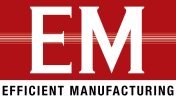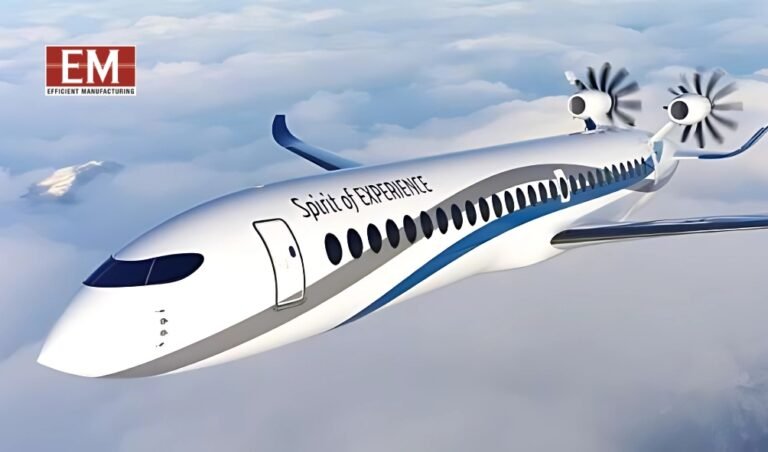| The aerospace and defense sector is the main pillar of worldwide advancement, safeguarding national interests and spearheading technological innovation. Yet, beneath its surface lies a labyrinth of supply chains interconnecting manufacturers, suppliers, and end-users.
Ravikiran Pothukuchi,
Director of Manufacturing & Logistics
Dassault Systèmes
With aerospace systems evolving into intricate marvels, both OEMs and suppliers are compelled to prioritise innovation and efficiency. This demands a shift towards a “factory of the future” framework, fostering agility and responsiveness in production rates.
Operating within a distinct and demanding landscape, the aerospace and defense sector navigates through unique challenges. Unlike conventional industries, this globally dominated duopoly market relies on special materials such as titanium and composites and specialized tools, often sourced from suppliers across the globea. This intricacy extends to its large supply chain, where precise timing and seamless integration across diverse cultures and time zones are imperative. Such interdependence renders the industry susceptible to various disruptions, spanning from natural calamities to geopolitical tensions, posing risks of delays, budget overruns, and even national security concerns within the defense realm. Virtual twin technology emerges as a promising solution to mitigate these challenges, here’s how.
A Demanding Landscape
The aerospace and defense sector demands cutting-edge technology and meticulous execution. Its global spread further amplifies this complexity. Aircraft and military equipment are marvels of engineering, requiring the precise integration of millions of parts from a vast network of global suppliers. This intricate ecosystem demands meticulous coordination and adherence to stringent quality standards. Additionally, aerospace and defense companies cater to a global market, with commercial aircraft manufacturers like Boeing and Airbus serving airlines worldwide and defense contractors supplying military hardware across continents, necessitating a globally dispersed supply chain with components sourced and assembled across diverse locations. These inherent traits of complexity and global reach distinguish these industries from many others, presenting unique challenges and opportunities in managing their intricate supply chains.
Major players like Boeing, Airbus, Lockheed Martin, and Raytheon dominate the aerospace and defense sectors, manufacturing a diverse range of products. Commercial aircraft, military jets, helicopters, and the entire defense paraphernalia are just a few examples. The importance of reliable supply chains in these industries stems from the critical nature of the products. Aircraft and military equipment must operate flawlessly, ensuring passenger safety, mission success, and national security.
Reliability goes beyond mere functionality. It encompasses factors such as safety, performance and innovation. To achieve this level of reliability, aerospace and defense companies rely on a network of highly certified suppliers. Stringent testing and evaluation processes ensure that each component meets rigorous quality standards. This meticulous approach is vital for building and maintaining trust in the industry, where even minor failures can have catastrophic consequences.
The industry is undergoing significant transformations driven by technological advancements and environmental considerations, impacting the entire value chain. Suppliers are tasked with achieving substantial cost reductions while maintaining elevated quality standards. Simultaneously, they are challenged to engineer and manufacture progressively intricate components and systems. Furthermore, there is a growing need for suppliers to streamline their production processes, making them leaner, more adaptable, and interconnected to enhance operational efficiency and respond effectively to fluctuations in demand.
Disruption Categories Threatening Aerospace Supply Chains
The aerospace industry’s globalised landscape exposes its supply chains to a myriad disruptive forces. Natural calamities such as earthquakes and floods can devastate production facilities and disrupt logistical networks. Geopolitical tensions and trade conflicts may restrict access to vital resources and impede collaboration with international partners. Cyberattacks targeting critical infrastructure pose significant threats, causing widespread chaos and interrupting manufacturing processes. Pandemics like COVID-19 can trigger widespread lockdowns, labor shortages, and disruptions in global trade, affecting both supply and demand dynamics within the sector. These diverse challenges underscore the vulnerability of interconnected aerospace supply chains and underscore the imperative for robust mitigation strategies.
Several underlying factors contribute to the susceptibility of aerospace supply chains, including reliance on specialised materials and equipment, globalisation, and just-in-time manufacturing practices. Addressing these root causes requires strategic approaches to mitigate risks and enhance resilience. This involves nurturing domestic capabilities for specialised materials and equipment, diversifying supplier networks, and potentially revisiting manufacturing methods to enable greater adaptability during disruptions. Additionally, expanding into new markets becomes crucial for differentiation and resilience against economic fluctuations, placing added pressure on suppliers to innovate and adapt collaboration models to meet the demands of emerging players in the Advanced Air Mobility and New Space sectors.
Disruptions in aerospace supply chains trigger a cascading impact with far-reaching consequences. Aircraft deliveries are often contracted years in advance, so delays result in significant financial implications for their end-customers, i.e, airlines, leading to lost revenue for airlines that in turn results in manufacturers incurring hefty delay penalties. Addressing disruptions often requires costly solutions such as expedited shipping or redesigning components, further escalating expenses. Ultimately, these delays and cost overruns curtail operational capabilities for airlines, resulting in flight cancellations, network disruptions, and diminished passenger and cargo transportation services. With the air traffic demand peaking to the pre-COVID levels, delayed deliveries is a huge opportunity cost that the ecosystem wouldn’t want to incur
Mitigating the impact of supply chain disruptions
To safeguard against the persistent threat of supply chain disruptions, aerospace enterprises can adopt a multifaceted strategy. This includes diversifying their sourcing network across multiple suppliers and geographic locations to reduce reliance on any single vulnerable point. One of the critical strategies in mitigating these supply chain disruptions is leveraging Virtual twin technologies. Virtual twin of operations helps the organization to address these disruptions both proactively and reactively.
For an anticipated disruption, aircraft manufactures can proactively reconfigure their sourcing strategies by harnessing AI-driven part standardisation that enables the identification of common components across various aircraft programs, streamlining design cycles and procurement processes. Such powerful AI-driven part standardisation built on Virtual twins helps designers and sourcing teams to arrive at alternative parts and sources swiftly, thereby bracing themselves for the anticipated disruptions. Additionally, robust risk management systems with thorough assessments empower proactive planning and swift responses to disruptions, minimising their overall impact on operations.
It is also equally important for these manufactures to reactively respond to these disruptions with agility. With the virtual twins of factory & production systems, manufacturers are able to simulate various what-if scenarios, and dynamically reschedule their manufacturing/assembly operations based on the Man/Machine/Material availability. These virtual twins help the shop floors to respond swiftly to supply disruptions with alternate schedules, thereby maintaining the productivity
While stockpiling raw materials and components may not be feasible due to the made-to-order nature of the industry, these strategic sourcing and technology-driven solutions offer effective ways to build resilience against the ever-present threat of supply chain disruptions.
Governments play a significant role in shaping the dynamics of aerospace supply chains through various regulations and policies. Export controls restrict access to sensitive materials and technologies, potentially impacting sourcing options. Trade agreements, on the other hand, create favourable conditions for international trade, easing the flow of goods across borders. National security considerations come into play through defense offset programs, where foreign OEMs are required to localise production or transfer technology, fostering domestic capabilities and potentially influencing the broader supply chain landscape. Additionally, many governments actively promote indigenous aerospace industries through initiatives like “Make in India” programs, aiming to reduce reliance on foreign suppliers and strengthen national security. These factors present both challenges and opportunities for companies in the aerospace industry, necessitating strategic sourcing approaches to navigate the complexities of this globalised yet geopolitically sensitive landscape.
The way forward
The future of aviation and defense supply chains is brimming with opportunities driven by emerging trends. The rise of drones necessitates a new, miniaturised, electronics-heavy supply chain, presenting a need for fab-localisation in India, which, in itself can become a huge market. Urban air taxis, if viable, is another segment to watch out for. Advanced manufacturing for next-generation defense aircrafts demands a shift in skills and capabilities within the supply chain. Geopolitical shifts like national security policies with defense offset programs and evolving trade agreements will necessitate adaptability in sourcing strategies. And, most importantly the push for sustainable aviation will require the supply chain to embrace new materials and technologies focused on reducing emissions and environmental impact.
These emerging trends demand a paradigm shift in the way this industry makes, sources and collaborates with its ecosystem. Companies must be agile, adaptable, and strategically source their materials and expertise to navigate the complexities of this evolving landscape.












